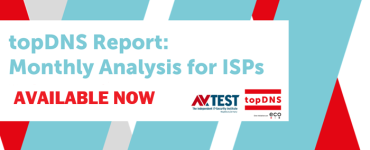IANA Transition in Retrospect – Piecing together the puzzle
Anyone who had previously thought that the transfer of a database function could only cause a minimum increase in pulse-rate was taught the error of their ways in the last few weeks. At midnight leading into the 1 October, Washington DC time, the “IANA Stewardship Transition” came into effect – and this story had all the ingredients of a good thriller.
The founding of ICANN and IANA
The first of a long list of cast and characters, there’s the Internet Corporation for Assigned Names and Numbers, ICANN for short, which has, since its foundation in 1998 undertaken the central administration of the Domain Name System (DNS). Because ICANN had not yet been tested, the US government (until that time, everything was strictly in US hands) was given the power of oversight over ICANN for an initial transition period and after about two years ICANN was to be completely privatized.
A contract regarding the so-called “IANA-Functions” between ICANN and the telecommunications authority NTIA, part of the US Department of Commerce, ensured that ICANN guaranteed the technical process through which, with the help of a unified global database, the so-called zone files of the Top-Level Domains – such as .de or .com – are stored and administered. The “DNS Root Zone File” is a central component of the Domain Name System (DNS), through which IP-addresses and domain names are linked, so that when a web address like www.eco.de is typed into a browser, the corresponding website is opened.
If there had ever been cause for an objection in relation to the carrying out of these functions, this contract would have given the NTIA the power to exert influence over ICANN and the IANA functions, and if necessary, to relocate these essential Internet functions to another body. Such a case has never occurred. ICANN organized itself from the very beginning – on its own initiative – as a multi-stakeholder institution with representatives from industry, governments, the civil society and the academic sector. Meet “The Community”.
First steps towards privatization
However, for the Bush Administration, giving ICANN its independence was no priority. It was only in the wake of the Edward Snowden revelations and the heated discussions as to the role of the USA as the supervising institution for the Internet that there was finally again movement in the matter. Several states threatened to withdraw from the globally functioning Domain Name System and to create nationally-controlled networks.
Now, it this point, enter: President Obama. And the US government announced in March 2014 their willingness to allow the IANA contract with ICANN, under specific conditions, to expire. This move got overwhelming worldwide support. The conditions were that the ICANN community should develop a proposal which, on the one hand guaranteed the security and stability of the Internet, and on the other hand strengthened the multi-stakeholder model and would not allow governments control.
Multi-stakeholder community develops contract for self-administration
This was achieved in March of this year at the 55th ICANN Meeting in Marrakech. After nearly two years of work, more than 200 meetings and more than 32,000 emails. And sleepless nights. The ICANN community put forward a proposal to the NTIA of how the organization could administer itself after the expiry of the contract. In the middle of all this were: Mathieu Weill (AFNIC), León Felipe Sánchez (Fulton & Fulton SC) and Thomas Rickert (eco Director Names & Numbers) who, as Co-Chairs of the Cross Community Working Group on Enhancing ICANN Accountability, provided leadership and hard work towards ICANN being able in future to administer itself without third-party oversight. Added to these was, in conjunction with the development of the required proposal for the technical part, Wolf-Ulrich Knoben from DE-CIX. In August of this year, the NTIA gave the green light for the contract package submitted by the ICANN community.
IANA Transition gets political
So far, so good. But then, in the USA, the campaign for the next presidential election had begun, and in such times, things quickly get laden with symbolism. After his failed candidacy for the US presidency in the previous election, the Republican Senator Ted Cruz from Texas sought a new stage, to keep himself in the spotlight. And the forthcoming IANA Transition was just right: After all, the freedom of opinion and the independence of the Internet was at stake, wasn’t it? The fact that the IANA functions have absolutely no influence over either of these noble goals didn’t sway him one bit.
The hearings organized in September in the US Senate reminded more than a few observers of the notorious performances of Senator Joseph McCarthy in the 1950s. Ted Cruz not only publically humiliated the subpoenaed people, among others, ICANN CEO Göran Marby, but openly threatened them with prosecution and the end of their professional career. In particular, he had it in for Larry Strickling, at the helm of the US Department of Commerce’s NTIA.
The Showdown
Ted Cruz had the intention of blocking the NTIA from using government subsidies in the coming three-month budget to fund the transition, through a measure in the still (at that stage) to be negotiated spending bill. But it didn’t come to this.
With this, it seemed, on the last Thursday in September, that the path had been cleared for the IANA Transition, as the contract between the NTIA and ICANN regarding the IANA functions was to expire in the night from Friday to Saturday. But a good thriller keeps its readers holding their breath until the last second, and it was still too early for the final showdown. So in the very last moment, cases were brought in the US states of Arizona, Texas, Oklahoma and Nevada against the NTIA and the execution of the IANA Transition.
And so all of those involved had to hold out until Friday evening to find out whether a provisional order would in fact delay the IANA Transition before the 1st of October, or whether the cases would be rejected. The ICANN community used the time to untiringly campaign for the implementation of the transition, using the Hashtag #yestoIANA and producing position statements like the Amicus Brief. At 4:30 pm Texas time, there was at last certainty: The court in Texas rejected the cases, so that the transition could be completed that same night.
If you, as an Internet user, are currently asking yourself if perhaps you should have noticed something of all the upheaval, the answer is no – nothing has changed. The Internet works in exactly the same way as it always has. This is not only a good sign for the successful process of the IANA Transition. Much more, it is the beginning of a new chapter in the story of the multi-stakeholder model, which carries forward the self-administration of the Internet. With the only different that this tale reads less like a thriller and more like a classic success story – although, that doesn’t make it any the less thrilling.



